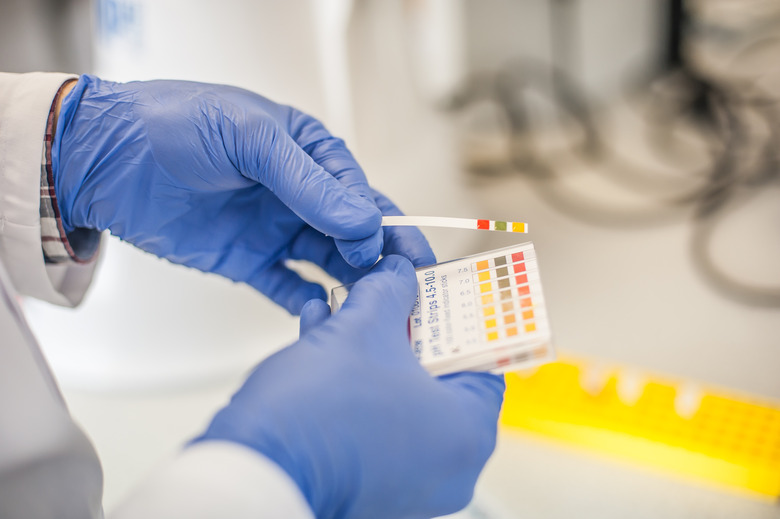Alkalinity is the ability of a solution to neutralize an acid to the equivalence point of calcium carbonate. It is not to be confused with basicity. In an academic setting, alkalinity is measured in milliequivalence per liter, and in commercial applications it is given in parts per million. Alkalinity is oftentimes measured in seawater and drinking water, and can be calculated as the sum of ion concentrations [HCO3-]+2x[CO3(-2)]+[OH-]-[H+]. To complete this calculation, you will need to perform a titration on your sample, from which you can derive the alkalinity of your sample.
Step 1
Measure the volume of your water sample in liters. Add an indicator solution that will change color once the solution has been completely neutralized.
Step 2
Add hydrochloric acid, drop by drop, until the indicator solution changes color. Record how many drops this takes. Convert this number to liters by dividing it by 20,000.
Step 3
Convert the amount of acid added to moles. Since the acid is 5M weight, multiply the volume of acid by 5.
Step 4
Find the molar equivalent of the hydrogen ion in your acid, and multiply it by the number of moles in the amount of acid added. Since hydrochloric acid has a molar equivalent of 1, you can simply change the units from moles to equivalents.
Step 5
Determine the molarity of the hydroxide in your sample. This is accomplished by dividing the calculated equivalent in the previous step by the volume of your water sample.
Step 6
Take the negative log base 10 of the molarity of hydroxide to get the total alkalinity of the sample. For example, in a 100 mL sample of water that took 50 drops of hydrochloric acid to neutralize, divide 50 by 20,000, to get 0.0025 L, multiply 0.0025 by 5 to get 0.0125 moles, convert it to 0.0125 equivalents, dividing 0.0125 by 0.1L to get 0.125, then taking the negative log base 10 of 0.125 to get a total alkalinity of 0.903 equivalents per liter.
Things Needed
- Eye dropper
- 5M hydrochloric acid
- Color changing indicator solution
- Water sample
- Calculator
- 2 beakers
Warning
Always wear rubber gloves and safety glasses when handling acids.

